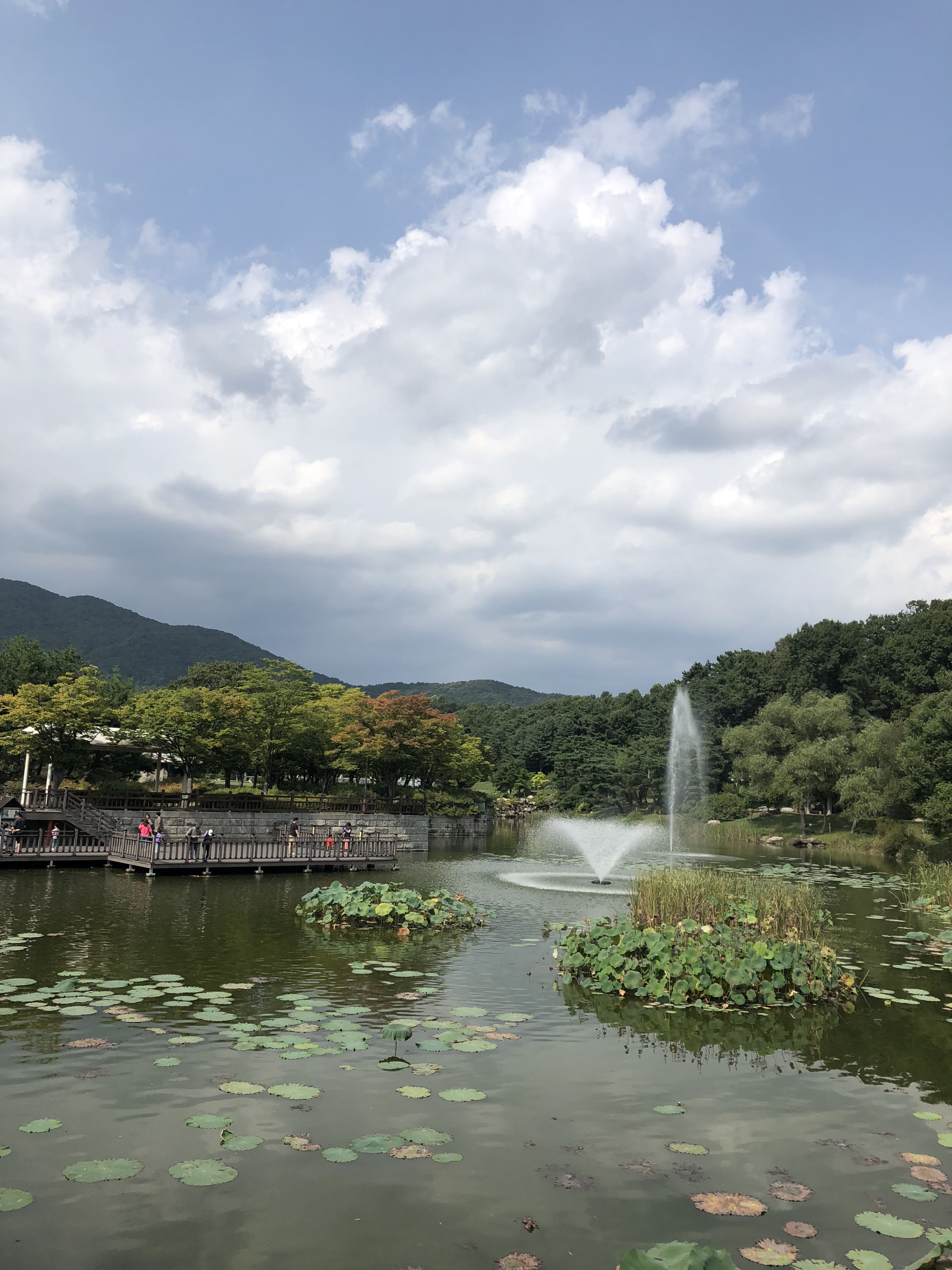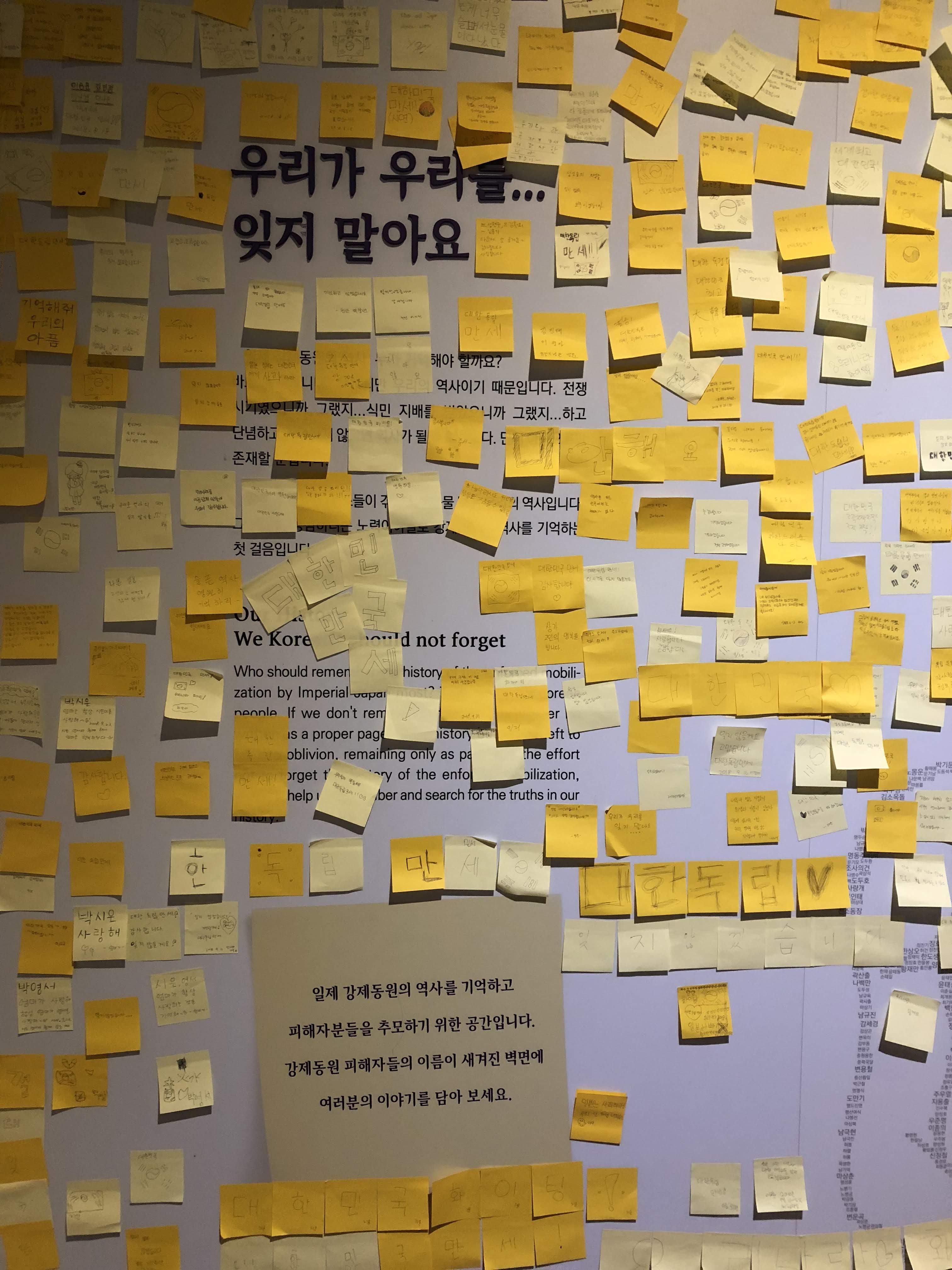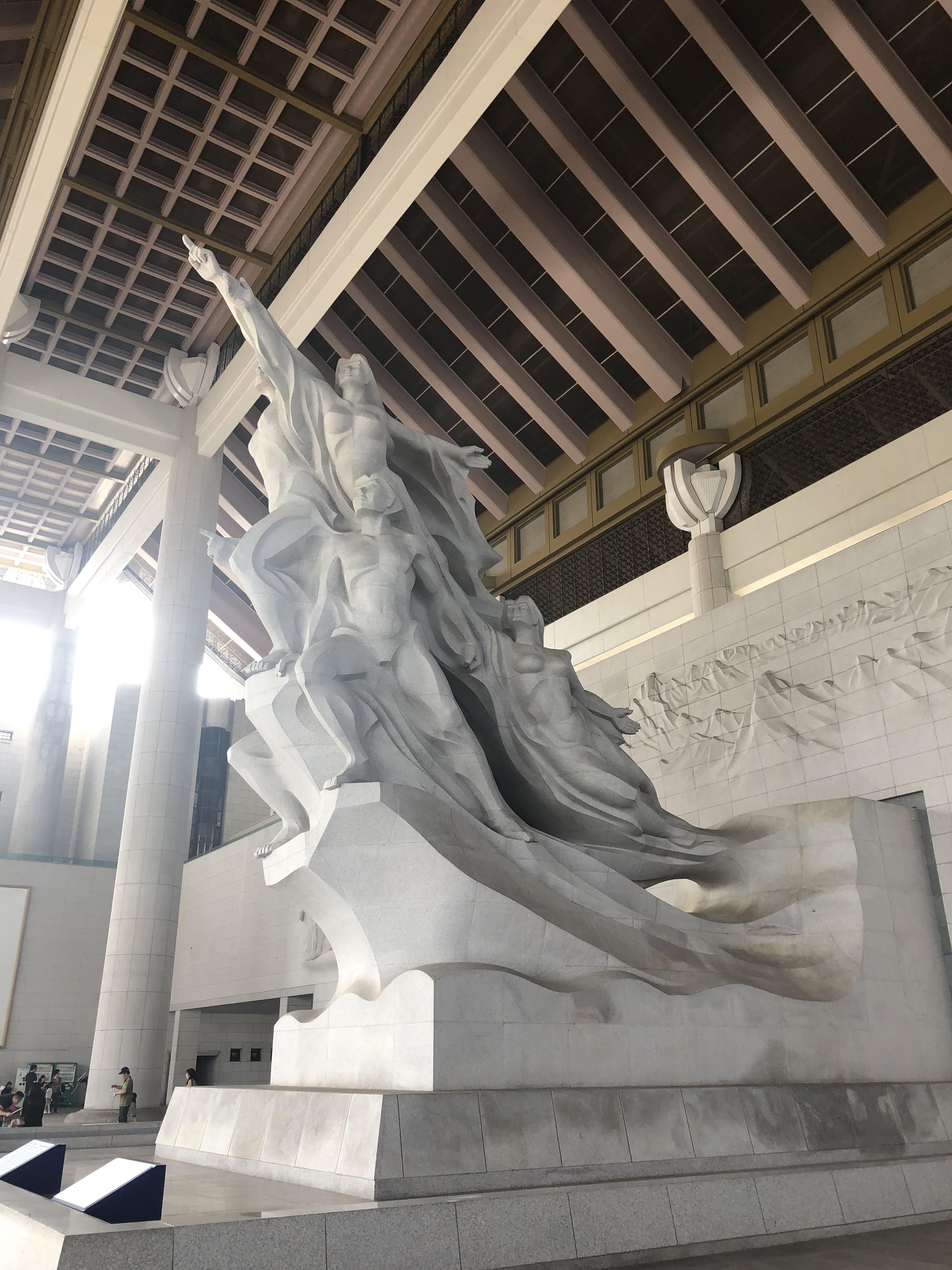Photos and text by Anna Yamamuro, a first-year ETA in Cheonan
My host mom has wondered before why I was interested in visiting the 독립기념관 (Dongnip Ginyeomgwan), or the Independence Hall of Korea, a museum located in my placement city of Cheonan. She asked me if it would be uncomfortable to visit a museum dedicated to Korea’s independence movement against Japanese colonization, considering I am half Japanese and half white-American. I said yes, but that’s the very reason I wanted to go. The legacy of that time still affects many people even today, and if we don’t face that history, uncomfortable as it may be, then nothing will change.
I have learned about this historical period over the years in various forms—through minimal coverage in history class at Japanese Saturday school, then again through Korean literature and history classes in college. I have learned the big ideas, but there is still much for me to learn about the hardships both of my countries have inflicted on the one I live in today. I could have been placed to teach anywhere in Korea, yet somehow I was sent here to Cheonan—the birthplace of Korea’s independence movement against Japanese colonial rule—and it felt like a sign.
My first impression of the museum was that it’s not a museum, really. It’s a park that stretches across a sprawling 23,424 square meters (almost 6 acres), complete with a lotus pond and fountain and a giant “Monument to the Nation” measuring 52 meters tall. Scattered among these are seven exhibition buildings describing Korea’s struggle for independence against Japanese colonization. Its immense size may be an indication of how important it was to the Korean people to tell their own story about what happened during a time when Korean voices were silenced.
While looking around the museum I was able to learn more about how the Japanese colonial regime took control over Korea. For example, Korean farmers were forced to send rice to Japan to supplement its own low rice production at the time, wrecking livelihoods and causing widespread hunger across Korea. As I walked through each museum building, I learned more about these kinds of details I had missed in the past, and reflected on how it’s possible that such horrible deeds were done by real, living people like us. I realized that these details of the colonial era speak volumes about how repressive institutions get established—slowly, subtly, insidiously.
As I approached the end of the final museum building, I saw a wall dotted with bright yellow post-it notes, covered in messages from museum visitors. Buried within the sea of yellow is a title: “우리가 우리를 잊지 말아요.” (“May we not forget ourselves.”)
One post-it in particular caught my eye. It had the words “FUCK JAPANESE PEOPLE” sprawled across it in English, and was decorated with drawings of several middle fingers. My first reaction was an automatic, intense defensiveness. A series of thoughts ran through my head: It’s not all Japanese people, why are they spreading negativity on a wall constructed to respect the victims, I didn’t do anything wrong… but after a few minutes, I put all those thoughts in order and put them away. When your family and country have been through deep trauma, if you need to let out that rage through an angry, tiny, yellow post-it, that is completely justified. I can endure a pinprick of sadness and discomfort for your history.
I began to think about my own history and especially my grandfather, my じじ (Jiji). I interviewed him once about World War II for a Japanese school project, I think in the 5th grade—and that is almost all I know about his life before he became じじ. じじ told me about how he was just a teenager during the war, who went to the countryside with his younger sister to escape the American bombings. He experienced hunger and saw people stiff and dead on the side of the road from starvation. But he survived, became a loving father and grandfather, and was a caring teacher to hundreds of students. When he was still with us in this world, I got the sense that じじ didn’t like that I enjoyed K-pop. Once, with the best intentions, he warned me that Korean people were “dangerous.”
What I would give to have him meet my loving, endlessly kind, Korean husband now.
The museum also made me think of my husband’s grandfather, his 할아버지 (Harabeoji), who is Korean but also tells us his story in Japanese, because that’s the language he went to school through. Every time we see him, 할아버지 describes how his father convinced him to flee his homeland on horseback, before North Korea was closed off to the rest of the world. He explains how he survived the war by escaping to Southeast Asia, where he met some American army men who he was able to communicate with through miming and received food rations from in exchange for helping with translating. Like じじ, he was also once a teacher.
I think じじ and 할아버지 could have been friends.
As all these thoughts swirled around in my head, I was struck by the absolute miracle that is my family, and everyone’s families; the whole generation that lived through the World Wars. Both our grandfathers narrowly survived hardships that I selfishly don’t even want to imagine. They, and those around them, made a series of choices that led them to their futures – to their careers, to their homes, and to their loved ones. They had children, who also had children.
And two of those children are my husband, Sean, and me. The two of us have three cultural backgrounds, each intensely interconnected yet often blind to each other’s perspectives and histories. We could have easily ended up being born and raised in any of the three countries, but after a series of coincidences and choices, we both somehow ended up in Southern California, at the same university, at the same time.
And now we’re married.
After visiting the museum, I called my husband to talk about all these stirring thoughts. The museum was fascinating, but I was overwhelmed and sad after seeing the atrocities people in power are capable of committing. How can I, one person who can’t speak enough Korean and Japanese to communicate these thoughts, make any difference?
Then he said something that really stuck with me: “We’re the ones making history now.”
It is so obvious, but somehow so easy to forget. What happens in the present quickly becomes the past, which eventually becomes history. We cannot go back in time but we can keep making mindful choices today. If all those small choices our grandparents made could lead me to the comfortable, happy life I lead today, with Sean by my side…I can also help contribute to a better future.





